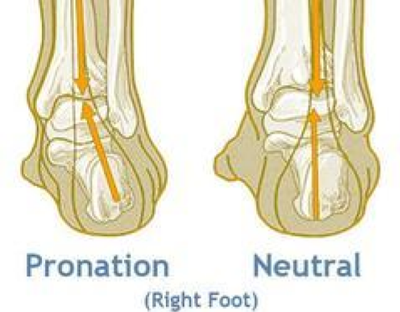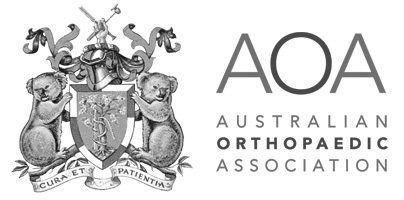Flat Feet or Over-Pronation
What are Flat Feet or Over-Pronation?
Flat feet are also commonly referred to as fallen arches and occur when the feet roll in or over-pronation during standing or walking.
With a healthy foot, the arch prevents the sole from lying flat on the ground while standing.
Flat Feet is a postural deformity in which the arches of the foot collapse, with the entire sole of the foot coming into complete or near-complete contact with the ground.
What are Collapsed Foot Arches?
When a person's arch collapses upon weight bearing this condition is also referred to as Collapsed Foot Arches. The common biomechanical condition that occurs during standing or walking.
Posterior tibial tendon dysfunction (PTTD) is a condition caused by changes in the tendon, impairing its ability to support the arch. This results in flattening of the foot. PTTD is often called adult acquired flatfoot because it is the most common type of flatfoot developed during adulthood.
Flat Feet in Children
A flat foot is normal in infants, most people's arches develop throughout childhood, but some people never develop arches.
Babies are born with flat feet, due to fatty pads filling out the sole portion of their feet. It isn’t until they are around the age of 3 that these fatty pads start to disappear when they are walking freely and confidently.
As these pads diminish, the natural arch starts to develop between the ages of 3 to 6. However, 1 out of 10 children never develop the arch and they have flat feet through their adult years.
Who is at Risk of Flat Feet?
Flat feet is a genetic disorder.
Age is also a risk factor for Flat Feet. Arches can fall over time. Years of wear and tear can weaken the tendon that runs along the inside of the ankle and helps support the arch.
Other factors are:
- Obesity
- Injury to your foot or ankle
- Rheumatoid arthritis
- Diabetes
What is the Impact of Flat Feet?
Flat Feet can cause aches and pains. Flat feet will often cause your legs to turn unnaturally inward and can contribute to injuries often associated with overuse and stress such as:
- Shin splints
- Heel spurs.
- Back problems
- Swollen ankles
- Knee problems, due to misalignment
- Plantar fasciitis
- Metatarsalgia,
- Tendonitis and/or bunions.
Flat Feet discomfort can also bring reduce a patient's active lifestyle leading to more health problems and weight gain. Flat Feet does not cause knock knees.
Causes of Flat Feet
There are many conditions that can cause flat feet and over-pronation. Common foot deformities and flexible muscle structure are the most frequent causes.
The structure of the foot begins to collapse, causing the foot to flatten and adding stress to other parts of the foot.
Other conditions that can weaken the arch and lead to over-pronation include:
- obesity,
- pregnancy or
- repetitive pounding on a hard surface.
Symptoms of Flat Feet
Over-Pronation does not always cause discomfort immediately, and some never suffer from any discomfort at all. When symptoms do develop that can include:
- Pain during walking,
- Knee pain,
- Feet and Calve Strain due to awkward alignment,
- Heel or arch Pain can worsen with activity, and
- Swelling along the inside of the ankle can also occur.
Stages of Flat Feet
If caught early enough Flat Feet can be corrected by treatments and supports.
- Stage 1
- there is pain along the posterior tibial tendon without deformity or collapse of the arch. The patient has the somewhat flat or normal-appearing foot they have always had.
- Stage II
- a deformity from the condition has started to occur, resulting in some collapse of the arch, which may or may not be noticeable. The patient may feel it as a weakness in the arch. Many patients initially present in stage II, as the ligament failure can occur at the same time as the tendon failure and therefore deformity can already be occurring as the tendon is becoming symptomatic.
- Stage III
- the deformity has progressed to the extent where the foot becomes fixed (rigid) in its deformed position.
- Stage IV - deformity occurs at the ankle in addition to the deformity in the foot.
How are Flat Feet Diagnosed?
When podiatrists look at the arch of your foot to see whether it’s touching the ground they can also assess whether the foot's position is 'neutral' or other.
Everyone's foot fits somewhere on an arch scale from extremely flat, neutral or highly supinated or 'high arched'.
Other signs that might indicate you have flat feet include:
- uneven shoe wear or shoes wearing out quickly
- regular pain in your feet and/or legs
- tripping or falling often, especially for children
- feet that are weak, numb or stiff
How are Flat Feet Treated?
Over-Pronation can be treated conservatively with orthotic insoles that are designed with appropriate arch support to prevent the over-pronation.
Stability shoes that feature a firm heel counter and wide soles help reduce over-pronation.
Other approaches include
- Resting
- Strengthening your foot muscles through toe curls, heel raises, and other exercises to improve foot support, stability and shock absorption.
- Not walking barefoot – Always wear proper fitting and supportive shoes
- Avoiding running or other high-impact sports
If you still experience foot pain, and your quality of life is affected by over-pronation you should seek the help of a podiatrist.
What if Flat Feet is Untreated?
If Over-pronation of the feet is left untreated, they become progressively more painful and debilitating.
Untreated and in its most severe form, the deltoid ligament on the inside of the ankle fails, resulting in the deformity in the ankle. This deformity over time can result in arthritis in the ankle.






